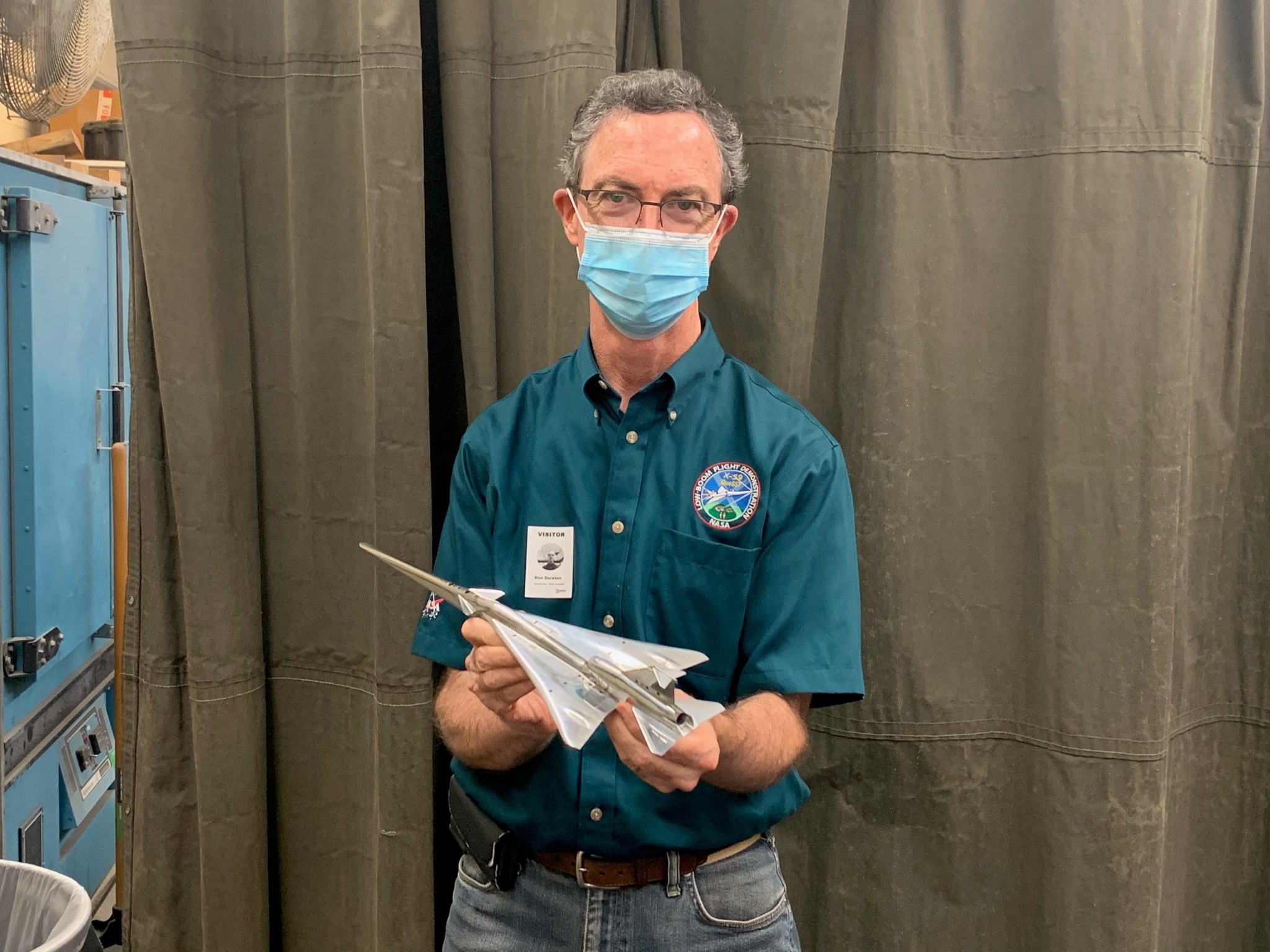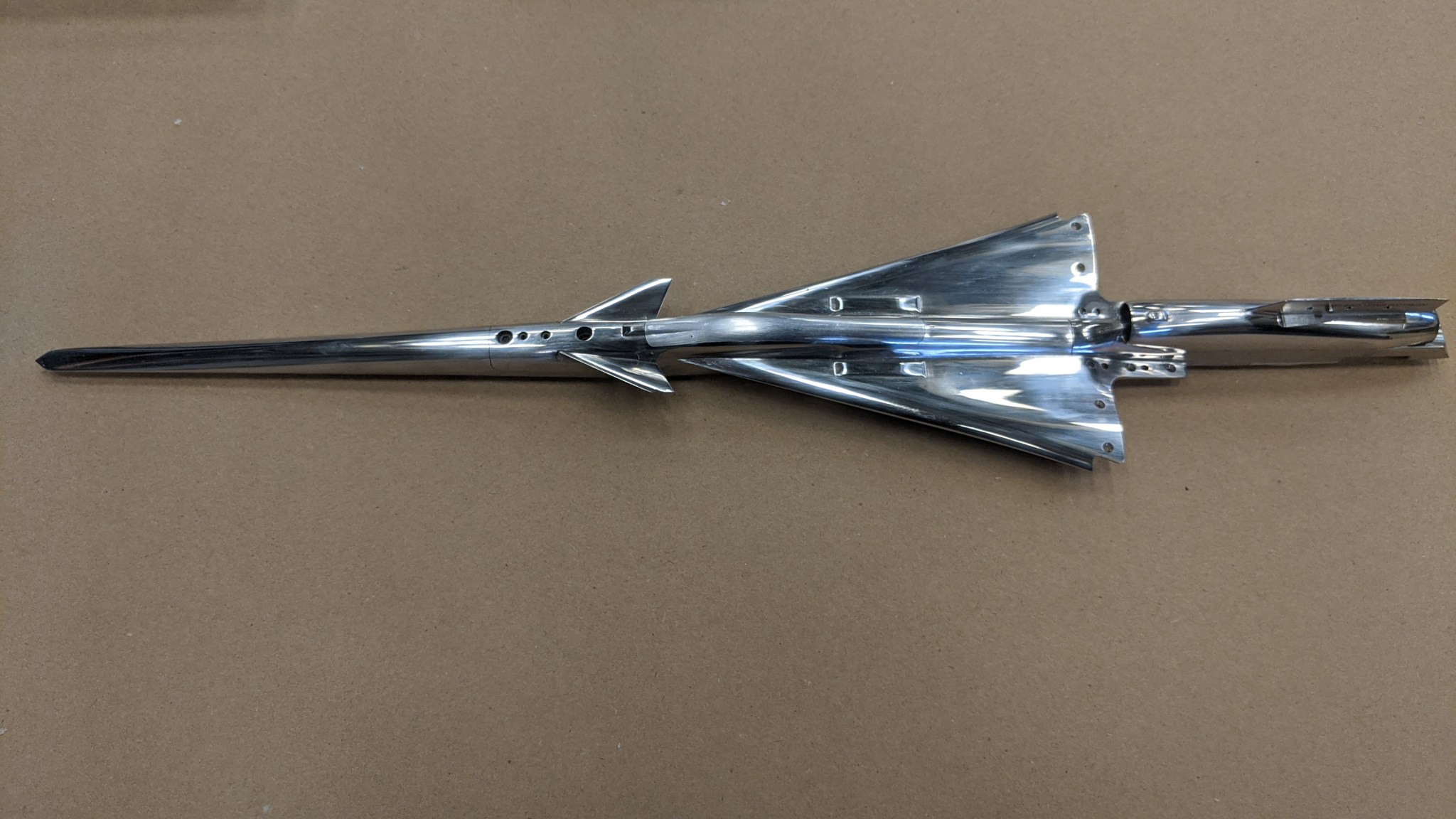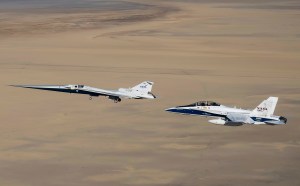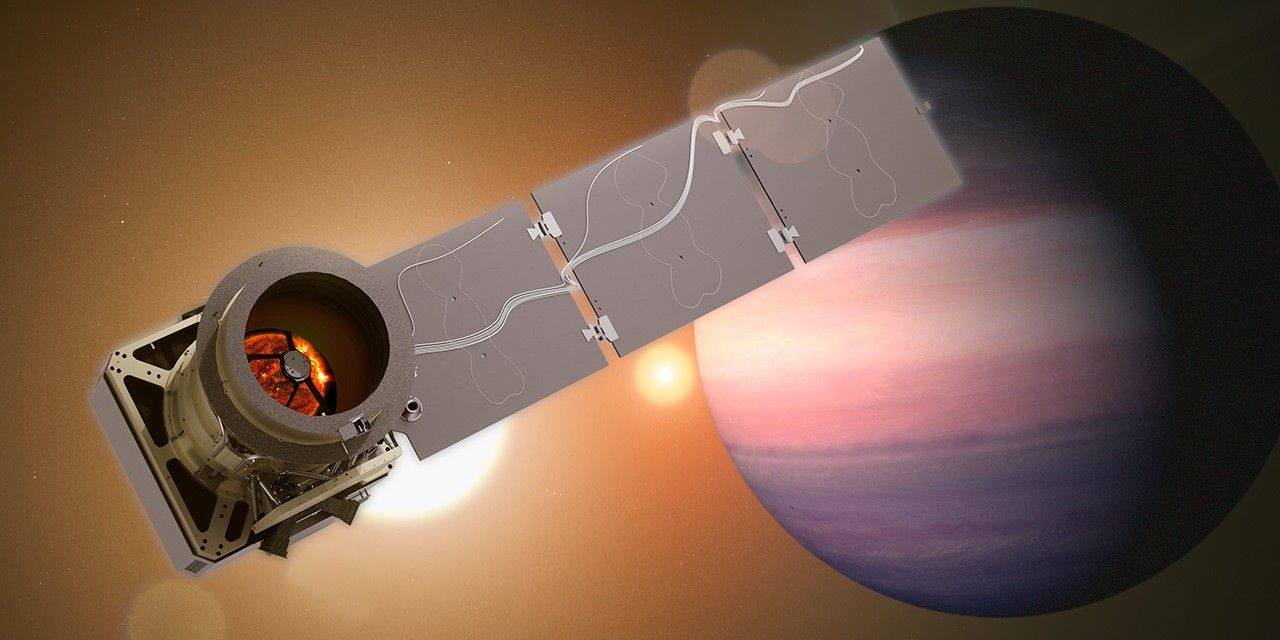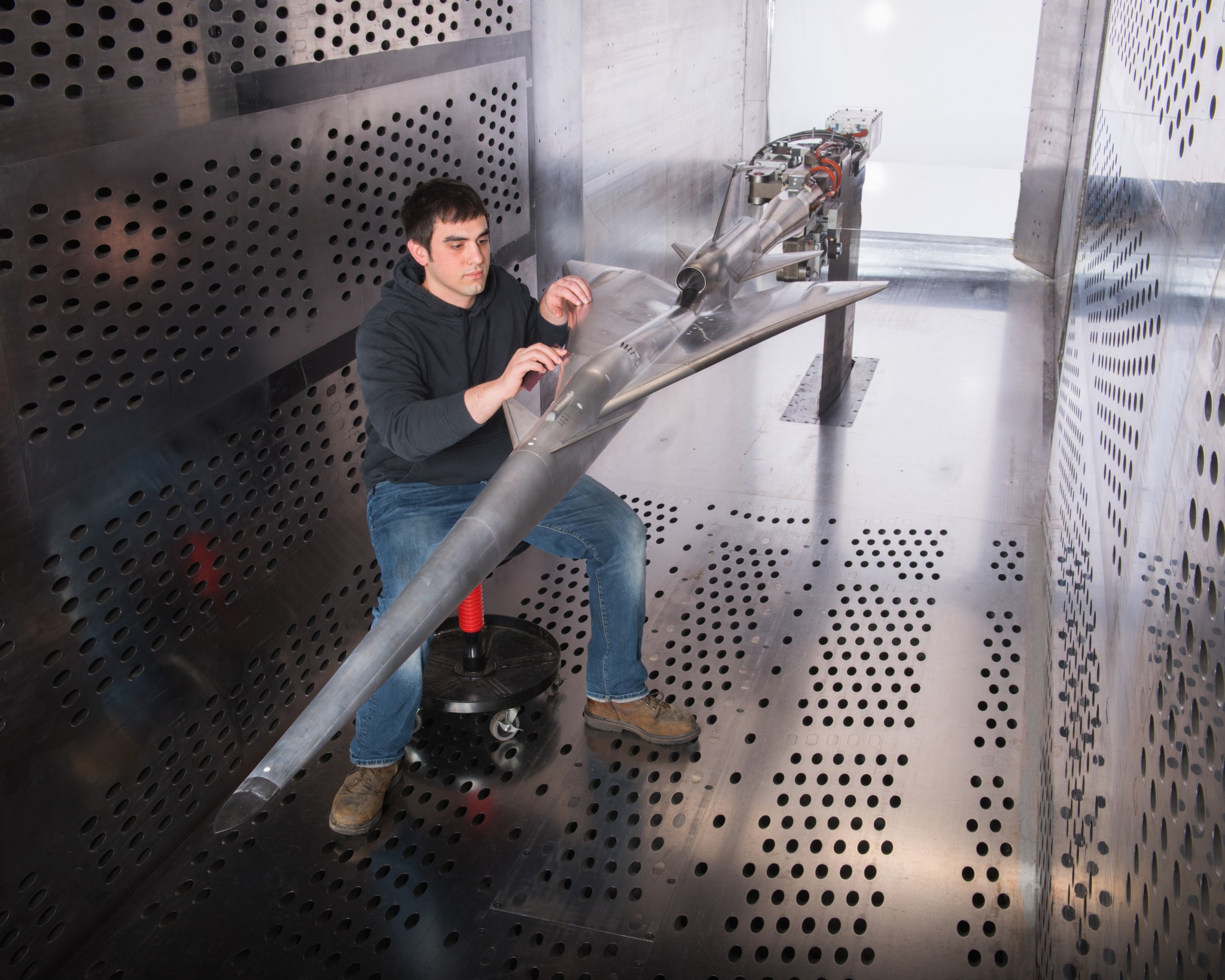
In the world of aviation research, new knowledge and tools can come from working with friends on a big project.
That’s the idea with NASA’s experimental X-59 Quiet SuperSonic Technology aircraft, which is the centerpiece of NASA’s mission to gather information intended to help enable a new era of commercial faster-than-sound air travel over land.
The friends in this case are aeronautical innovators representing NASA and the Japan Aerospace Exploration Agency, also known as JAXA.
Under an agreement reached in December 2020, during the next three years the two parties will take independent wind-tunnel measurements of the same small-scale model of the X-59, and the results will be compared afterward.
We have a long and rewarding history of working with JAXA’s experts in the area of supersonic research, as well as other technologies, and I know this collaboration will prove mutually beneficial.

Robert pearce
NASA's Associate Administrator for Aeronautics Research
Not only will the partnership help expand knowledge of the X-59, new techniques for running tests in wind tunnels and using computer simulations that may result from the collaboration can help create future designs of supersonic aircraft.
During the past 20 years JAXA has tested several small supersonic research models in wind tunnels as well as computer simulations. JAXA’s current supersonic research is focused within its Sky Frontier Program, which seeks in part to realize a quiet, faster-than-sound aircraft that can carry up to 50 people.
In approving the terms of the agreement with NASA, Masatoshi Harigae, Director General of JAXA’s Aeronautical Technology Directorate, said he was optimistic about the joint research opportunity.
“I am looking forward to the fruitfulness of cooperative activities hereof and hope it strengthens our partnership in the field of aeronautical technology,” Harigae said.
Here are some details about the collaboration:
The shape of the X-59 is designed so that, when it is flying supersonic, the resulting shock waves coming off the airplane – measured as changes in air pressure, which we perceive as sound – reach the ground in a way that can barely be heard.
One way to make sure the X-59 will work as intended is to “fly” a smaller version of the real thing in a wind tunnel and take measurements of the pressure waves as the supersonic airflow passes over the scale model to sure they are behaving as expected.
But even in the 21st century, with all our technical know-how, measuring supersonic airflow over an airplane model in a wind tunnel is an uncertain process. Even running the same test with the same model can produce different results on different days.
Put the model in another wind tunnel and you’ll get a slightly different version of the data.
“But that’s a good thing. By using the same model in both wind tunnels we can improve our certainty in the data obtained and increase our understanding of the X-59’s design,” said Melissa Carter, a senior researcher with NASA’s Commercial Supersonic Technology project.
The JAXA team is well-regarded for its experiments during the past decade to improve wind tunnel test techniques with supersonic aircraft and use that data to verify its computer simulation tools.
“Not only do we expect to verify our modeling of the shockwaves from the X-59 in flight, we’re also confident the collaboration will help both agencies gain further insights into conducting supersonic testing in wind tunnels,” Carter said.
The initial schedule would see the first round of wind tunnel tests taking place at NASA’s Glenn Research Center in Cleveland late this summer. However, the schedule could change due to technical reasons and the continuing impact of the global pandemic.
Early in 2022 the scale model X-59, which is about 19 inches long, will be shipped to Japan and installed in a JAXA wind tunnel. Tests will begin about three months or so after its arrival.
Joint data crunching, analysis, comparison of results and report writing for presentation at workshops and other meetings would follow into the third year.




























